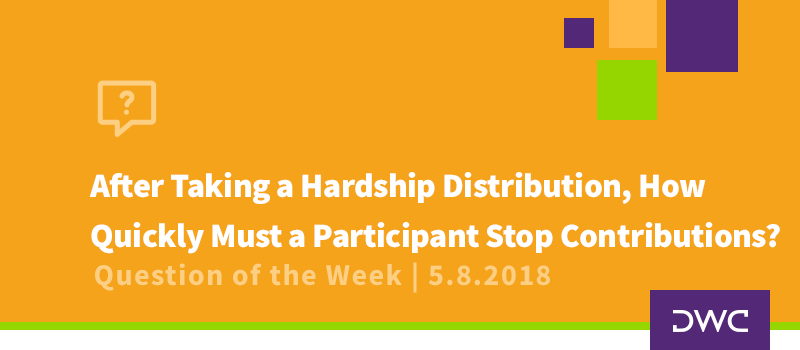Form 5500 – File It Late or Incomplete?
Every year, we receive inquiries from plan sponsors unable to file the Forms 5500 for their 401(k) plans by the deadline. Though often due to the 5500 audit not yet being complete, there can any number of reasons for a delay.
The question pretty much always comes down to this…should we file what’s available by the deadline and amend later (maybe attaching a letter of explanation) or do we wait until complete and file late? With potentially significant fines on the table (more than $2,500/day from the DOL and $250/day from the IRS), we certainly understand the angst around that question.
We should start by saying that there is no “right” answer here, and both options carry risk.
Late Filing
The Department of Labor has a correction program called the Delinquent Filer Voluntary Compliance Program (DFVCP). The sole purpose of that program is right in the name. It provides significantly reduced penalties for plan sponsors who voluntarily submit their late Forms 5500 before being contacted by the DOL. We are talking a flat fee of $750 or $2,000 for a small plan or large plan, respectively, rather than up to almost $3,000 per day otherwise. With that said, $2,000 (or $750 for a small plan) is not pocket-change, and no one wants to spend that if they don’t have to.
The unknown is how quickly the DOL sends a delinquency notice, ending eligibility to use DFVCP and subjecting the plan sponsor to those big daily penalties. Our experience is that although the IRS is often the faster agency (sometimes sending notices within only a couple months), the DOL can take 4 to 6 months or longer. No one can guarantee that, but that’s what we’ve seen. Even if that IRS notice does show up more quickly, only a DOL notice precludes use of DFVCP. Simply submit the late filing under DFVCP and respond to the IRS notice accordingly. Voila! Problem solved.
Time is of the essence either way, so it’s best to act quickly and submit the form as soon as possible rather than pushing the outer limits of when the DOL may send a letter.
Incomplete Filing
The assumed “advantage” of submitting a timely but incomplete form and amending later is that it avoids the daily penalties. After all, neither the IRS nor DOL assesses any fees or penalties for amending a previous filing.
There are two additional points to consider, however. First is that both the IRS and DOL tend to respond more quickly to deficient Forms 5500 than delinquent ones. And if the deficiency is due to something obvious (like the plan auditor’s report) being omitted, the agencies tend to be heavier-handed. In fact, we’ve seen the DOL outright reject forms submitted without an auditor’s report. Since a rejected form is treated more or less as if nothing was submitted in the first place, this results in one of those “out of the frying pan and into the fire” situations. Not good.
A common suggestion is to simply attach a letter to the Form 5500, explaining to the DOL that the audit report (or whatever is missing) will be submitted soon. The other side to that is that it draws attention to the missing information and also makes it clear that the omission was intentional rather than accidental.
This brings us to our second point…the penalty of perjury statement. When submitting a Form 5500, the filer signs off on the following statement at the bottom of the first page:
“Under penalties of perjury and other penalties set forth in the instructions, I declare that I have examined this return/report…and to the best of my knowledge and belief, it is true, correct, and complete.” [We added the italics and underline.]
If the audit report is not attached, the Form 5500 is not complete. Knowingly signing/submitting an incomplete form while stating that it is complete to the best of one’s knowledge under penalty of perjury is, well, perjury. While we’re not aware of the DOL being in the business of throwing people in prison for deficiencies on their Forms 5500, they have been known to play the perjury card to justify more extreme penalties when things have escalated for other reasons.
Lesser of Two Evils
Which one is better? Tough question since both options involve non-compliance and subsequent correction. The agencies tend to take longer to respond to a late filing, buying additional time to gather whatever is missing and submit under the delinquent filer program; however, there is no escaping some sort of penalty (that $750 for a small plan or $2,000 for a large plan).
The DOL, at least, (and they are the important ones here since they control the delinquent filer program) tends to respond more quickly to an incomplete filing…and often with a heavier hand for obvious omissions. Plus, there’s that whole perjury thing. However, if the deficient form is amended and the missing information submitted before that inevitable “love letter” from the IRS or DOL arrives, it is possible (theoretically, at least) to avoid assessment of any penalties.
We can’t really “recommend” any course of action that is not compliant. Since the incomplete filing route includes signing that penalty of perjury statement with full knowledge that the filing is not complete, it’s hard to envision a situation in which that is the better option.
Variation on the Theme
There is another relatively common situation when this debate arises, though it is somewhat different. Let’s look at a quick example. Confusion, Inc. hires a new third party administrator for its 401(k) plan in November 2022. The new TPA is set to takeover for the 2023 plan year, but the old TPA discontinues services immediately in November. It’s not until the new TPA goes to prepare the 2023 Form 5500 (in September 2024) that everyone discovers no one ever prepared a 2022 Form 5500, and there isn’t enough time before the 2023 filing deadline to go back and prepare it.
Do they prepare/file a 2023 Form 5500 to the best of their ability (without ending financials from the previous year as a starting point for this year) and amend later or do they wait to file 2023 until they can complete both years and submit together?
While this situation doesn’t create the same “penalty of perjury” concerns, it still begs that timing question. Our experience is that filing the 2023 Form 5500 timely only draws agency attention to the fact that 2022 is missing, increasing the likelihood of a DOL letter before 2022 can be submitted under DFVCP and resulting in potentially significant daily fines. Sure, submitting both 2022 and 2023 late means doubling the DFVCP user fee (to $1,500 or $4,000 for small or large plans, respectively), but anecdotally at least, that option likely provides more time for them to get their ducks in a row before a DOL letter shows up. Of course, it’s always preferable to file timely. If everyone involved is confident in the ability to prepare and file the late 2022 Form in short order, filing 2023 on time is probably the better option.
Conclusion
Both the IRS and DOL emphasize having internal controls in place to facilitate plan compliance as well as acting expeditiously and in good faith when errors occur. If you are facing a late 5500 or any other plan error, give us a call. We’ll review the details of your situation with you and help you decide on a path toward correction.

















